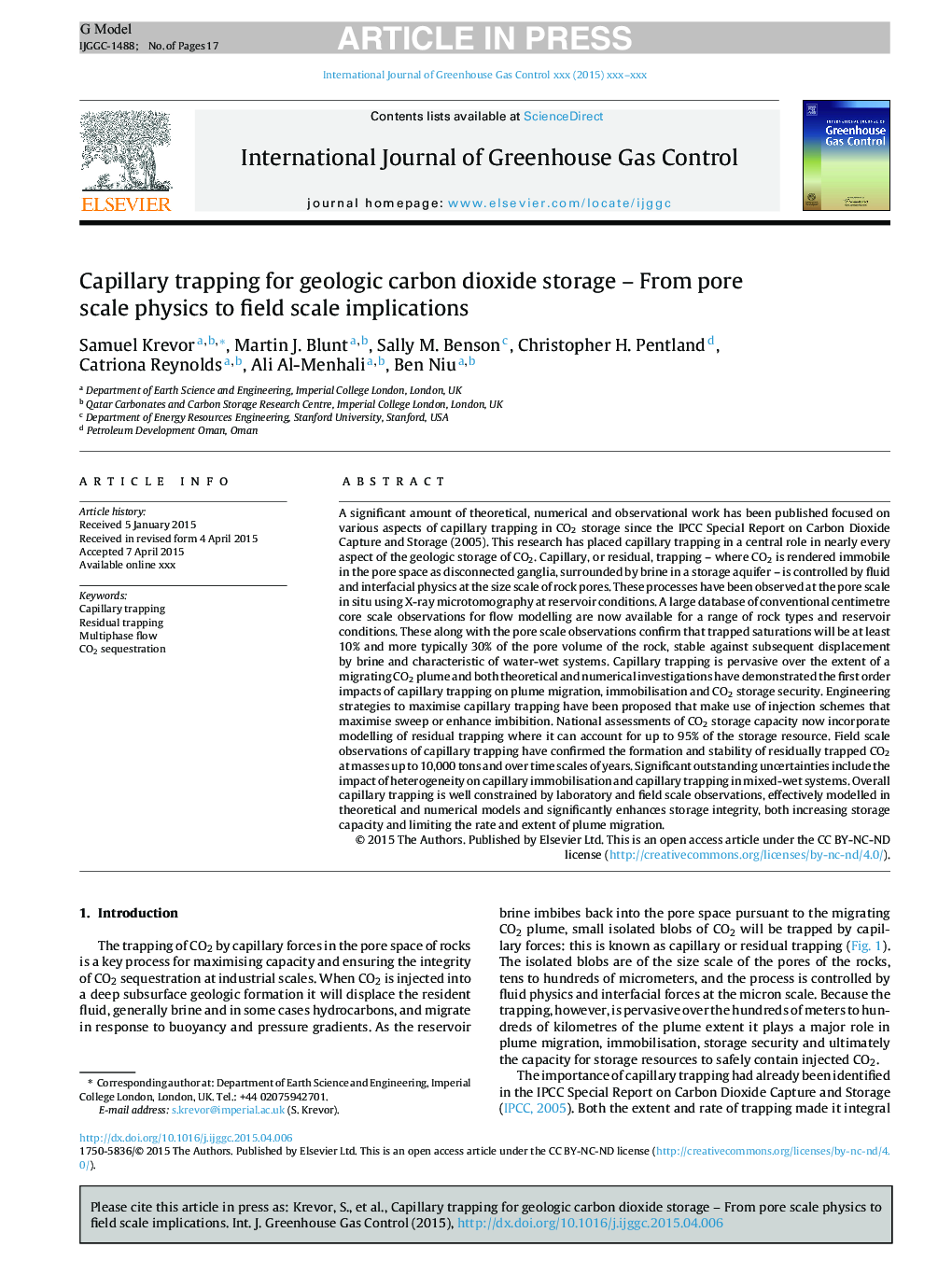| کد مقاله | کد نشریه | سال انتشار | مقاله انگلیسی | نسخه تمام متن |
|---|---|---|---|---|
| 8090616 | 1521981 | 2015 | 17 صفحه PDF | دانلود رایگان |
عنوان انگلیسی مقاله ISI
Capillary trapping for geologic carbon dioxide storage - From pore scale physics to field scale implications
ترجمه فارسی عنوان
تله مویرگی برای ذخیره سازی دی اکسید کربن زمین شناسی - از فیزیک مقیاس به پیامدهای مقیاس میدان
دانلود مقاله + سفارش ترجمه
دانلود مقاله ISI انگلیسی
رایگان برای ایرانیان
کلمات کلیدی
موضوعات مرتبط
مهندسی و علوم پایه
علوم زمین و سیارات
فرآیندهای سطح زمین
چکیده انگلیسی
A significant amount of theoretical, numerical and observational work has been published focused on various aspects of capillary trapping in CO2 storage since the IPCC Special Report on Carbon Dioxide Capture and Storage (2005). This research has placed capillary trapping in a central role in nearly every aspect of the geologic storage of CO2. Capillary, or residual, trapping - where CO2 is rendered immobile in the pore space as disconnected ganglia, surrounded by brine in a storage aquifer - is controlled by fluid and interfacial physics at the size scale of rock pores. These processes have been observed at the pore scale in situ using X-ray microtomography at reservoir conditions. A large database of conventional centimetre core scale observations for flow modelling are now available for a range of rock types and reservoir conditions. These along with the pore scale observations confirm that trapped saturations will be at least 10% and more typically 30% of the pore volume of the rock, stable against subsequent displacement by brine and characteristic of water-wet systems. Capillary trapping is pervasive over the extent of a migrating CO2 plume and both theoretical and numerical investigations have demonstrated the first order impacts of capillary trapping on plume migration, immobilisation and CO2 storage security. Engineering strategies to maximise capillary trapping have been proposed that make use of injection schemes that maximise sweep or enhance imbibition. National assessments of CO2 storage capacity now incorporate modelling of residual trapping where it can account for up to 95% of the storage resource. Field scale observations of capillary trapping have confirmed the formation and stability of residually trapped CO2 at masses up to 10,000Â tons and over time scales of years. Significant outstanding uncertainties include the impact of heterogeneity on capillary immobilisation and capillary trapping in mixed-wet systems. Overall capillary trapping is well constrained by laboratory and field scale observations, effectively modelled in theoretical and numerical models and significantly enhances storage integrity, both increasing storage capacity and limiting the rate and extent of plume migration.
ناشر
Database: Elsevier - ScienceDirect (ساینس دایرکت)
Journal: International Journal of Greenhouse Gas Control - Volume 40, September 2015, Pages 221-237
Journal: International Journal of Greenhouse Gas Control - Volume 40, September 2015, Pages 221-237
نویسندگان
Samuel Krevor, Martin J. Blunt, Sally M. Benson, Christopher H. Pentland, Catriona Reynolds, Ali Al-Menhali, Ben Niu,
